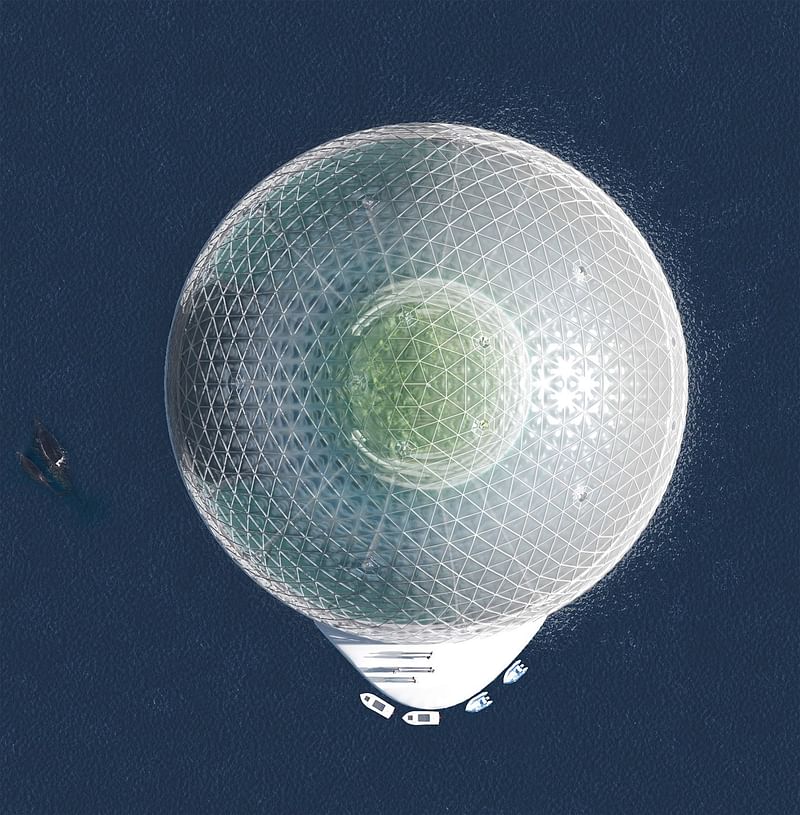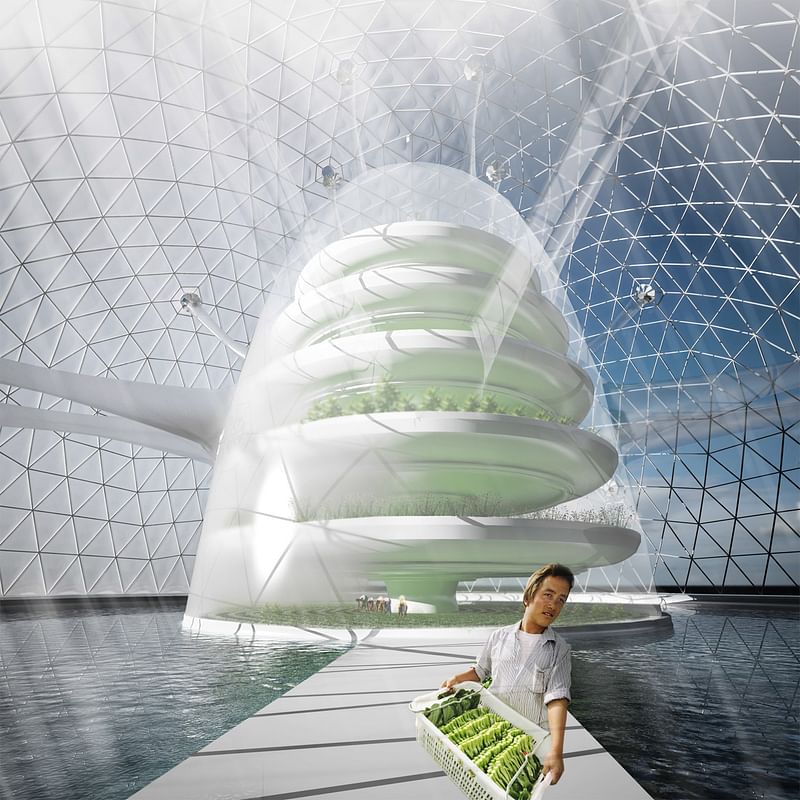Seawater greenhouse agriculture with Ocean Distiller Farm
By Bustler Editors|
Thursday, Mar 20, 2014

Related
If you haven't already registered for the 2014 edition of the Jacques Rougerie Foundation International Architectural Competition, perhaps we can hint at what the competition looks for with "Ocean Distiller Farm" by Nicolas Souchko Architecture.
Addressing irrigation and food shortage issues, this entry was a finalist in the "Innovation and architecture for the sea" category from the last edition.
Check it out below.
Project description:
"Oceans and seas. A naive question: how can one suffer from malnutrition and dehydration while being surrounded by oceans and seas, almost inexhaustible sources of water and food supply. Answers are now well known as they become more obvious: intensive fishing is slowly but surely devastating the sea population while salted water is unsuitable for drinking and for agriculture. Modern technology, when contextualized in this sustainable development era, can passively tame this malnutrition issue for populations near oceans and seas. That is what the project OCEAN DISTILLER FARM is aiming at."

"Goal & concept: The OCEAN DISTILLER FARM concept aims at populations living by the oceans and seas and which are suffering from malnutrition. Two inventions using sea water inspired this project: the sea water distiller greenhouse and the greenhouse agriculture. The seawater distiller greenhouse turns salted water into clear water through a steam recovery system. Greenhouse agriculture offers a favorable artificial weather for farming and allows the recovery of water sweating from vegetables as well as the water used for drainage. Its usage only requires the sun as energy, seawater, fertile grounds and a few seeds.
Figures OCEAN DISTILLER FARM is a vessel which diameter is 80 meters and height reaches 50 meters. Its black distillation surface is 3600m2 wide. Evaporating and taking control over this water would allow the irrigation of 5000m2 wide of farmland. Therefore, OCEAN DISTILLER FARM would generate additional food supply for a hundred people. The number of vessels at sea would vary depending on the population."

"Morphogenesis: In between seas and oceans, the OCEAN DISTILLER FARM’s design is inspired by the anatomy of a jellyfish, which many levels of transparency reveal various depths and perceptions. A first space will be translucent, isolated from outside by an ethylene tetrafluorethylene membrane, allowing a solid isolation, preserving as much as possible the solar energy. This space will lean on a black surface above which a thin quantity of salted water will stagnate to be dedicated to evaporation. The conveyance of salted water will be controlled in order to maintain the best depth allowing its temperature raise and therefore its evaporation. This space will be hot and humid, unbearable to any human being and unsuitable for agriculture.
This second space, also covered by an EFTE membrane, will also include direct air intake from the outside, facilitating climatic regulation, suitable for the culture of various vegetables. By analogy with the jellyfish, the ectoderm would be the first membrane of the greenhouse, the mesoglea the evaporation space, the endoderm would be the second membrane that would protect the nervous system but the abundant generated vegetation."

"OCEAN DISTILLER FARM doesn’t claim it is going to solve all food supply problems by itself. However, the vessel could bring an effective source of additional food supply for population suffering from malnutrition. The vessel doesn’t imply any expensive infrastructures; it only requires the transportation (a boat) of the harvested resources. Its underwater-life-inspired design matches with its marine environment. It will be a source of hope in places where the drought and the sea coexist."
Images courtesy of Nicolas Souchko Architecture.
Click the thumbnails below to see project diagrams.



Share
0 Comments
Comment as :